Posté par Sébastien Bontemps, le 14 septembre 2015;
- Date limite : 25 septembre 2015
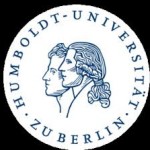 Professorship in Medieval Visual Cultures, HU Berlin Institut für Kunst- und Bildgeschichte, Humboldt-Universität zu Berlin Professorship in Medieval Visual Cultures, HU Berlin Institut für Kunst- und Bildgeschichte, Humboldt-Universität zu Berlin
Application deadline: Sep 25, 2015
The Faculty of Humanities and Social Sciences at the Humboldt University of Berlin, Department of Art and Visual History, invites applications for a Full Professorship in Medieval Visual Cultures (W3) to begin as soon as possible. The appointed professor should be a nationally and internationally recognized medieval art historian with a research focus in the critical study of image and form (in both religious and secular contexts) and transcultural exchange during the Middle Ages. Knowledge of contemporary cultural studies and theories related to medieval art is desired.
The candidate should have experience with interdisciplinary projects and be willing to collaborate . . . → En lire plus
Posté par Sébastien Bontemps, le 13 septembre 2015;
- Date limite : 31 octobre 2015
- Date et lieu : 23 juin 2016, Greifswald
 Choir stalls & its workshops (Greifswald, 23 Jun 16) Greifswald, 23. – 26.06.2016 Deadline: Oct 31, 2015 Choir stalls & its workshops (Greifswald, 23 Jun 16) Greifswald, 23. – 26.06.2016 Deadline: Oct 31, 2015
MISERICORDIA INTERNATIONALE KOLLOQUIUM 2016
Thema: Choir stalls and its workshops
Session organisers: Anja Seliger, Humboldt-University of Berlin, Cluster of Excellence Image Knowledge Gestaltung; Prof. Dr. Gerhardt Weilandt, Ernst-Moritz-Arndt-University of Greifswald, Department of Art
History Misericordia International is an international multidisciplinary network for broad-based research on choir stalls. Starting from the artistic design the studies dedicate to the relationship with other artistic elaborations and their proliferation in the Middle Ages and more recent times. The intensive exchange with scientists of neighboring disciplines shows interfaces between disciplines and subjects of investigation and give new impetus to the exploration of the choir stalls. The basis for . . . → En lire plus
Posté par Denis Dubois, le 31 août 2015;
- Date et lieu du colloque : 3-4 octobre 2015, Paray-le-Monial, Centre culturel et théâtre
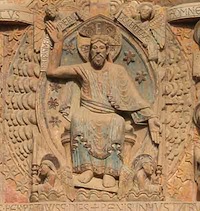 « Le tympan sculpté est l’un des principaux ornements de l’architecture romane. Il porte une haute signification, offerte aux fidèles qui entrent dans l’église et reçoivent ainsi un enseignement en image, facile à décrypter de premier abord. Cette signification est fondée soit sur les saintes écritures – il s’agit alors d’un discours généraliste, comme à Anzy-le-duc ou Montceaux-l’Etoile, soit sur un aspect particulier de l’histoire religieuse locale, comme au tympan de Semur-en-Brionnais figurant un épisode dramatique de la vie de saint Hilaire. Le tympan affiche donc l’identité historique et spirituelle de l’église. Mais le discours qu’il représente peut être plus . . . → En lire plus « Le tympan sculpté est l’un des principaux ornements de l’architecture romane. Il porte une haute signification, offerte aux fidèles qui entrent dans l’église et reçoivent ainsi un enseignement en image, facile à décrypter de premier abord. Cette signification est fondée soit sur les saintes écritures – il s’agit alors d’un discours généraliste, comme à Anzy-le-duc ou Montceaux-l’Etoile, soit sur un aspect particulier de l’histoire religieuse locale, comme au tympan de Semur-en-Brionnais figurant un épisode dramatique de la vie de saint Hilaire. Le tympan affiche donc l’identité historique et spirituelle de l’église. Mais le discours qu’il représente peut être plus . . . → En lire plus
Posté par Denis Dubois, le 21 août 2015;
- Date limite : 20 septembre 2015
- Date et lieu du colloque : 7-9 octobre 2015, Belgique, Musées de Bruxelles et Liège, Université de Namur
 En proposant de regrouper sous le vocable d’art mosan les œuvres qu’il avait pu admirer à l’exposition de Liège de 1881, l’archéologue français Charles de Linas ne faisait en réalité que reprendre à son compte une hypothèse qui se trouvait déjà en gestation depuis quelques décennies dans l’esprit de quelques érudits locaux. Loin de faire l’unanimité, jugée caduque dès les premiers débats, cette appellation, rapidement érigée au rang de discipline scientifique, allait pourtant résister au temps, aux aléas de l’histoire et aux influences délétères de la politique nationale et . . . → En lire plus En proposant de regrouper sous le vocable d’art mosan les œuvres qu’il avait pu admirer à l’exposition de Liège de 1881, l’archéologue français Charles de Linas ne faisait en réalité que reprendre à son compte une hypothèse qui se trouvait déjà en gestation depuis quelques décennies dans l’esprit de quelques érudits locaux. Loin de faire l’unanimité, jugée caduque dès les premiers débats, cette appellation, rapidement érigée au rang de discipline scientifique, allait pourtant résister au temps, aux aléas de l’histoire et aux influences délétères de la politique nationale et . . . → En lire plus
Posté par Denis Dubois, le 20 août 2015;
- Date limite : 15 septembre 2015
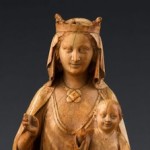 AVISTA sponsored session at the International Medieval Congress, Kalamazoo, 2016: The Long Lives of Medieval Objects, from Big to Small AVISTA sponsored session at the International Medieval Congress, Kalamazoo, 2016: The Long Lives of Medieval Objects, from Big to Small
Traditional histories often privilege the moment of an object’s origin, whether it be the design of a building, the production of a manuscript, or the creation of decorative arts, ritual or mundane. Yet medieval objects have long and expansive lives that defy the period and geographic boundaries set by academic disciplines. Many medieval objects have extended prehistories emerging from their sites and contexts of creation, and most medieval objects have undergone a variety of interventions and adaptations since coming into being. The lives of these objects have been further extended through historiography and digital . . . → En lire plus
Posté par Denis Dubois, le 9 août 2015;
- Date limite : 7 septembre 2015
- Date et lieu du colloque : 6–8 janvier 2016, Hull (Yorkshire), The University of Hull
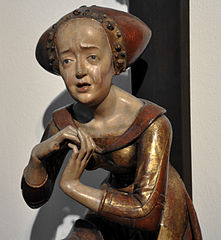 The grief-stricken faces at Edward’s deathbed in the Bayeux Tapestry; the ambiguous ‘ofermod’ in The Battle of Maldon; the body-crumpling anguish of the Virgin witnessing the Man of Sorrows; the mirth of the Green Knight; the apoplectic anger of the mystery plays’ Herod and the visceral visionary experiences of Margery of Kempe all testify to the ways in which the medieval world sought to express, perform, idealise and understand emotion. The grief-stricken faces at Edward’s deathbed in the Bayeux Tapestry; the ambiguous ‘ofermod’ in The Battle of Maldon; the body-crumpling anguish of the Virgin witnessing the Man of Sorrows; the mirth of the Green Knight; the apoplectic anger of the mystery plays’ Herod and the visceral visionary experiences of Margery of Kempe all testify to the ways in which the medieval world sought to express, perform, idealise and understand emotion.
Yet while such expressions of emotion are frequently encountered by medievalists working across the disciplines, defining, quantifying and analysing the purposes of emotion and its relationship to gender often proves difficult. Are personal items . . . → En lire plus
Posté par Thomas Bohl, le 27 juillet 2015;
- Date limite : 15 septembre 2015
- Date et lieu du colloque : 12-15 mai 2016 ; University of Western Michigan, Kalamazoo
 CFP, ICMS (“Kalamazoo”) 2016: Gendered Spaces Hortulus-sponsored session Session organizer and presider: Melissa Ridley Elmes, co-editor of Hortulus The concept of gendered spaces—areas in which particular genders and types of gender expression are considered welcome or appropriate while other gender types are unwelcome or inappropriate—is a key element in the study of human geography. Gendering spaces is one way in which social systems maintain the organization of gender, and can preserve and dictate the accepted norms of gendered behavior, as well as relationships and hierarchies between men and women. Studying gendered spaces—environments, landscapes, and other places that have been designated specifically for “men” or for . . . → En lire plus CFP, ICMS (“Kalamazoo”) 2016: Gendered Spaces Hortulus-sponsored session Session organizer and presider: Melissa Ridley Elmes, co-editor of Hortulus The concept of gendered spaces—areas in which particular genders and types of gender expression are considered welcome or appropriate while other gender types are unwelcome or inappropriate—is a key element in the study of human geography. Gendering spaces is one way in which social systems maintain the organization of gender, and can preserve and dictate the accepted norms of gendered behavior, as well as relationships and hierarchies between men and women. Studying gendered spaces—environments, landscapes, and other places that have been designated specifically for “men” or for . . . → En lire plus
Posté par Thomas Bohl, le 27 juillet 2015;
- Date limite : 15 septembre 2015
- Date du colloque : 12-15 mai 2016 ; University of Western Michigan, Kalamazoo
 Speaking Sculpture: Images and their Potency Speaking Sculpture: Images and their Potency
Organizers: Lloyd de Beer, British Museum Julia Perratore, Metropolitan Museum of Art
Do sculptures speak? Can they listen? Are they able to read, sing, and engage with other sculptures, or the architecture of their surroundings? If so, is this connected to their context and placement? How do these questions affect the way in which we view sculpture and its performativity?
In seeking to answer these and related questions, this session will address the manifold ways in which sculpture could potentially address its viewers, and, by extension, listen. The interactive nature of much medieval art, and particularly sculpture, suggests that viewers’ engagement with . . . → En lire plus
Posté par Pascale Dubus, le 27 juillet 2015;
- Date limite : 15 septembre 2015
- Date et lieu du colloque : 12-15 mai 2016, Kalamazoo, University of Western Michigan
 Questions of the significance of materials now occupy a central place within medieval art history. Within this material turn, attention has generally been centered on the importance and meaning of individual materials, particularly luxury materials, such as gold, silver, ivory, and gemstones. But how were these—and other—materials evaluated relative to each other? That is to say, to what extent did material hierarchies obtain, both in theory and in (artistic) practice? This session investigates hierarchies of materials and media in medieval art from Late Antiquity through the end of the fourteenth century. It seeks to build upon the burgeoning body of work on . . . → En lire plus Questions of the significance of materials now occupy a central place within medieval art history. Within this material turn, attention has generally been centered on the importance and meaning of individual materials, particularly luxury materials, such as gold, silver, ivory, and gemstones. But how were these—and other—materials evaluated relative to each other? That is to say, to what extent did material hierarchies obtain, both in theory and in (artistic) practice? This session investigates hierarchies of materials and media in medieval art from Late Antiquity through the end of the fourteenth century. It seeks to build upon the burgeoning body of work on . . . → En lire plus
Posté par Denis Dubois, le 24 juillet 2015;
- Date limite : 1er octobre 2015
- Date et lieu du colloque : 9-10 juin 2016, Oslo, University of Oslo
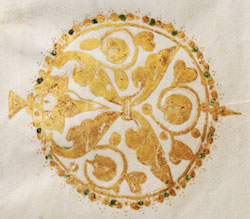 This conference is the last of a series for the Graphicacy and Authority in Early Medieval Europe Project. The aim of the project has been to gather scholars from a wide range of disciplines to discuss the increasing role of non-figural graphic devices across a wide range of media, from manuscripts to architecture and mass-produced objects. This conference is the last of a series for the Graphicacy and Authority in Early Medieval Europe Project. The aim of the project has been to gather scholars from a wide range of disciplines to discuss the increasing role of non-figural graphic devices across a wide range of media, from manuscripts to architecture and mass-produced objects.
Visual communication in Late Antiquity and the early Middle Ages is conventionally analysed using methods specific to either figural imagery (and visualcy of the past) or literary productions (and literacy). In contrast, our project focuses on non-figural graphic devices which are intermediaries between texts and pictures, and which appear during Late . . . → En lire plus
Posté par Denis Dubois, le 21 juillet 2015;
- Date et lieu du colloque : 23-25 juin 2016, Bâle, Université de Bâle
- Date limite : 28 août 2015
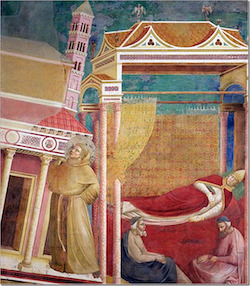 Cette session se fixe pour objectif d‘établir un vaste panorama des théories et pratiques de la perception des images au Moyen Âge, incluant les images non matérialisées comme les ekphraseis ou les rêves. Les sources écrites attestent des pratiques de perception les plus diverses. Ces témoignages sur la réception montrent que le potentiel de sens des images ne se réalise qu’en partie selon le mode de perception choisi – mouvement, immobilité, contexte à forte charge synesthétique du rite liturgique. C’est justement sur cette tension entre une perception à la fois calculée et échappant à un contrôle total que nous entendons nous concentrer dans cette section. . . . → En lire plus Cette session se fixe pour objectif d‘établir un vaste panorama des théories et pratiques de la perception des images au Moyen Âge, incluant les images non matérialisées comme les ekphraseis ou les rêves. Les sources écrites attestent des pratiques de perception les plus diverses. Ces témoignages sur la réception montrent que le potentiel de sens des images ne se réalise qu’en partie selon le mode de perception choisi – mouvement, immobilité, contexte à forte charge synesthétique du rite liturgique. C’est justement sur cette tension entre une perception à la fois calculée et échappant à un contrôle total que nous entendons nous concentrer dans cette section. . . . → En lire plus
Posté par Pascale Dubus, le 20 juillet 2015;
- Date et lieu du colloque : 8-9 janvier 2016, Oxford, St Hilda's College
- Date limite : 1er septembre 2015
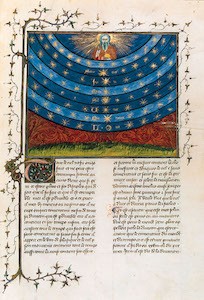 La relation entre le mot et l’image et les façons dont l’art médiéval (qu’il soit visuel et/ou textuelle) fonctionne comme un moyen d’exprimer l’inexprimable, sera exploré lors d’un colloque de deux jours, les 8 et 9 janvier 2016, au St Hilda’s College d’Oxford. Ce colloque interdisciplinaire réunira des théologiens, des historiens de l’art, des littéraires et des universitaires pour examiner les façons dont les différentes formes d’expression artistique sont utilisées pour énoncer la mystique ou ce qui ne peut être facilement dit. La relation entre le mot et l’image et les façons dont l’art médiéval (qu’il soit visuel et/ou textuelle) fonctionne comme un moyen d’exprimer l’inexprimable, sera exploré lors d’un colloque de deux jours, les 8 et 9 janvier 2016, au St Hilda’s College d’Oxford. Ce colloque interdisciplinaire réunira des théologiens, des historiens de l’art, des littéraires et des universitaires pour examiner les façons dont les différentes formes d’expression artistique sont utilisées pour énoncer la mystique ou ce qui ne peut être facilement dit.
Nous vous invitons à proposer des interventions de 20 minute et des thèmes de session comprenant trois interventions de 20 minutes. Veuillez, s’il vous plaît, envoyer un résumé . . . → En lire plus
Posté par Denis Dubois, le 19 juillet 2015;
- Date limite : 15 septembre 2015
- Date et lieu du colloque : 12-15 mai 2016, Kalamazoo, University of Western Michigan
 Art historians traditionally focus on the finished work, yet attention to the creative process of making allows us to consider how medieval builders and artisans constructed monuments, made objects, and planned workflow for large-scale projects. Furthermore, this line of inquiry allows us to consider spatial planning and haptic encounters. The use of new technologies such as digital reconstructions, laser scans, 3D printing, and other imaging tools provides scholars with the opportunity to understand the conceptual processes of art making in the Middle Ages as never before through reverse engineering. Art historians traditionally focus on the finished work, yet attention to the creative process of making allows us to consider how medieval builders and artisans constructed monuments, made objects, and planned workflow for large-scale projects. Furthermore, this line of inquiry allows us to consider spatial planning and haptic encounters. The use of new technologies such as digital reconstructions, laser scans, 3D printing, and other imaging tools provides scholars with the opportunity to understand the conceptual processes of art making in the Middle Ages as never before through reverse engineering.
Recent art-historical scholarship has reintroduced interest in the materiality/object-ness of medieval art and architecture and . . . → En lire plus
Posté par Pascale Dubus, le 18 juillet 2015;
- Date limite : 8 November 2015
- Date et lieu du colloque : 11-12 mars 2016, Dublin, University College Dublin (UCD)
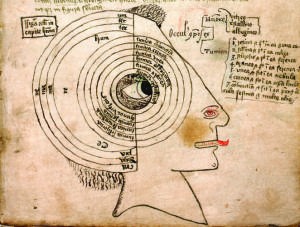 Proposals for papers are invited for The Senses in Medieval and Renaissance Europe: Sight and Visual Perception, which aims to provide an international and interdisciplinary forum for researchers with an interest in the history of the senses in the Middle Ages and Renaissance. University College Dublin, 11-12 March 2016. Proposals for papers are invited for The Senses in Medieval and Renaissance Europe: Sight and Visual Perception, which aims to provide an international and interdisciplinary forum for researchers with an interest in the history of the senses in the Middle Ages and Renaissance. University College Dublin, 11-12 March 2016.
The history of the senses is a rapidly expanding field of research. Pioneered in Early Modern and Modern studies, it is now attracting attention also from Medieval and Renaissance specialists. Preoccupation with the human senses and with divine control over them is evident in a range of narrative texts, scientific treatises, creative literature, as . . . → En lire plus
Posté par Pascale Dubus, le 17 juillet 2015;
- Date limite : 4 décembre 2015
- Date et lieu du colloque : 4-6 février 2016, Arizona, Scottsdale
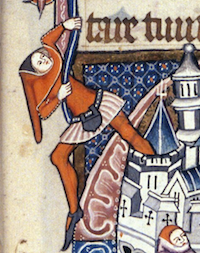 Arizona Center for Medieval and Renaissance Studies (ACMRS) invites session and paper proposals for its annual interdisciplinary conference to be held February 4-6, 2016 at the Embassy Suites Hotel in Scottsdale. We welcome papers that explore any topic related to the study and teaching of the Middle Ages and Renaissance and especially those that focus on the general theme of « Marginal Figures in the Global Middle Ages and Renaissance. » Arizona Center for Medieval and Renaissance Studies (ACMRS) invites session and paper proposals for its annual interdisciplinary conference to be held February 4-6, 2016 at the Embassy Suites Hotel in Scottsdale. We welcome papers that explore any topic related to the study and teaching of the Middle Ages and Renaissance and especially those that focus on the general theme of « Marginal Figures in the Global Middle Ages and Renaissance. »
Proposals will be accepted on a rolling basis until midnight, MST on December 4, 2015. Responses will be given within a week of submission. Please submit an abstract of 250 words . . . → En lire plus
Posté par Sylvain Demarthe, le 12 juillet 2015;
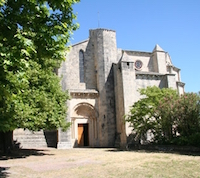 Les études sur le monachisme féminin en France au Moyen Âge apparaissent actuellement éparses, parfois datées et même en marge par rapport aux études sur le milieu monacal masculin. De plus, une approche historique semble privilégiée à l’histoire de l’art et à l’archéologie. Actuellement, les travaux du Centre Européen de Recherche sur les Congrégations et les Ordres Religieux (CERCOR), rattaché à l’Université Jean-Monnet de Saint-Étienne, comptent parmi les références majeures et les plus actualisées sur le sujet. Si les actes du deuxième colloque international du CERCOR, Les religieuses dans le cloître et dans le monde, datant de 1994, rassemblent diverses contributions axées principalement sur l’histoire, la récente journée . . . → En lire plus Les études sur le monachisme féminin en France au Moyen Âge apparaissent actuellement éparses, parfois datées et même en marge par rapport aux études sur le milieu monacal masculin. De plus, une approche historique semble privilégiée à l’histoire de l’art et à l’archéologie. Actuellement, les travaux du Centre Européen de Recherche sur les Congrégations et les Ordres Religieux (CERCOR), rattaché à l’Université Jean-Monnet de Saint-Étienne, comptent parmi les références majeures et les plus actualisées sur le sujet. Si les actes du deuxième colloque international du CERCOR, Les religieuses dans le cloître et dans le monde, datant de 1994, rassemblent diverses contributions axées principalement sur l’histoire, la récente journée . . . → En lire plus
Posté par Pascale Dubus, le 12 juillet 2015;
- Date limite : 15 août 2015
- Date et lieu du colloque : 29-30 avril 2016, Berne
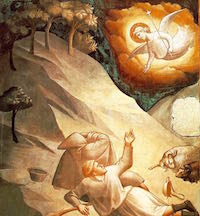 Chiaroscuro since Leon Battista Alberti’s De pictura (1435) has been one of the central subjects characterising painting and sculpture in practice and theory in Italy. Primarily, it concerns the articulation of plastic qualities, the formulation of relief, both in painting and sculpture. In the northern tradition, too, chiaroscuro has been highly valued. Through chiaroscuro, the textures of materials and the structural fabric of their surfaces, including their eye-catching highlights, have been evoked. Chiaroscuro goes hand in hand with an intensification of optical qualities. Chiaroscuro since Leon Battista Alberti’s De pictura (1435) has been one of the central subjects characterising painting and sculpture in practice and theory in Italy. Primarily, it concerns the articulation of plastic qualities, the formulation of relief, both in painting and sculpture. In the northern tradition, too, chiaroscuro has been highly valued. Through chiaroscuro, the textures of materials and the structural fabric of their surfaces, including their eye-catching highlights, have been evoked. Chiaroscuro goes hand in hand with an intensification of optical qualities.
In the Cinquecento, the significance of chiaroscuro underwent an important change. The evocation of plasticity and corporeality through a chiaroscuro . . . → En lire plus
Posté par Sébastien Bontemps, le 6 juillet 2015;
- Date limite : 15 septembre 2015
- Date et lieu du colloque : 12-15 mai 2015, University of Western Michigan, Kalamazoo, USA
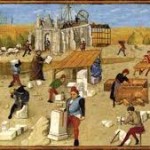 Session at 51. Int. Congress on Medieval Studies (Kalamazoo, 12-15 May 16) University of Western Michigan, Kalamazoo, MI (USA), May 12 – 15, 2016 Session at 51. Int. Congress on Medieval Studies (Kalamazoo, 12-15 May 16) University of Western Michigan, Kalamazoo, MI (USA), May 12 – 15, 2016
Deadline: Sep 15, 2015
New Perspectives on Medieval Rome (2 Sessions) Organizers: Marius B. Hauknes, Andrew W. Mellon Postdoctoral Fellow, Johns Hopkins University Alison Locke Perchuk, Assistant Professor of Art History, California State University Channel Islands Digital, environmental, material, Mediterranean, sensory, spatial: these are among the recent “turns” taken by the medieval humanities, including art history.
The new perspectives on the past opened by these approaches, many of which are informed by interdisciplinary research and contemporary cultural interests in the natural and built world, are fundamentally reshaping how we conceive of and study medieval art and . . . → En lire plus
Posté par Pascale Dubus, le 6 juillet 2015;
- Date limite : 10 octobre 2015
- Date et lieu de la journée d'étude : 2 décembre 2015, Tours, CESR
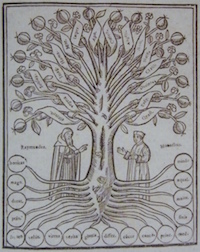 Le mot « arborescence », du latin arborescere, arborescentem [1] rend compte, par son suffixe « -escent », d’un procédé en cours. Par son radical « arbor », il renvoie également à l’idée d’un réseau formant une image identifiable, l’arbre, à même d’établir des liens cohérents entre un tout et ses parties. L’arborescence apparaît à la fois comme image et structure imagée. Le mot « arborescence », du latin arborescere, arborescentem [1] rend compte, par son suffixe « -escent », d’un procédé en cours. Par son radical « arbor », il renvoie également à l’idée d’un réseau formant une image identifiable, l’arbre, à même d’établir des liens cohérents entre un tout et ses parties. L’arborescence apparaît à la fois comme image et structure imagée.
Une telle double lecture permet des emplois didactiques. L’arborescence, comme structure imagée d’une part, implique par sa croissance, le déploiement d’une ligne conductrice, d’un ductus, qui guide la « compositio »[2] c’est-à-dire l’ordonnancement d’une matière textuelle et/ou iconographique. En effet, l’image des racines, du tronc . . . → En lire plus
Posté par Sarah Feron, le 3 juillet 2015;
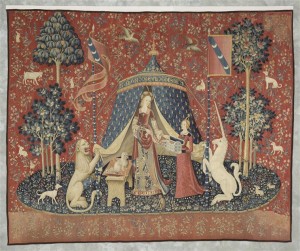 Cinquièmes Rencontres de la Galerie Colbert Cinquièmes Rencontres de la Galerie Colbert
Tous les chercheurs, restaurateurs et conservateurs de la Galerie Colbert sont invités à participer aux cinquièmes Rencontres de la Galerie Colbert
Pour cette cinquième édition, la Galerie Colbert ouvre à nouveau ses portes au grand public. Lieu historique conservant la mémoire du XIXe siècle et de ses fameux « passages », elle héberge depuis 2001 la plupart des établissements d’enseignement et de recherche d’Île-de-France en histoire de l’art, ainsi que l’Institut national du patrimoine.
Les Rencontres du 30 janvier 2016 permettront de visiter ce haut lieu de la recherche, de la formation et de la coopération internationale en histoire de . . . → En lire plus
|
Équipe Rédacteur en chef : Olivier Bonfait.
Rédacteurs : Elliot Adam (Moyen Age) ; Nicolas Ballet (XX-XXIe siècles) ; Matthieu Fantoni (musées) ; Antonella Fenech Kroke (bourses) ; Vladimir Nestorov (Lettre mensuelle)
Administrateur web : Matthieu Lett.
ancien éditeur : Pascale Dubus
anciens rédacteurs : Gautier Anceau, Sébastien Bontemps, Damien Bril ; Sébastien Chauffour ; Ludovic Jouvet ; Aude Prigot
|
 Professorship in Medieval Visual Cultures, HU Berlin Institut für Kunst- und Bildgeschichte, Humboldt-Universität zu Berlin
Professorship in Medieval Visual Cultures, HU Berlin Institut für Kunst- und Bildgeschichte, Humboldt-Universität zu Berlin


















